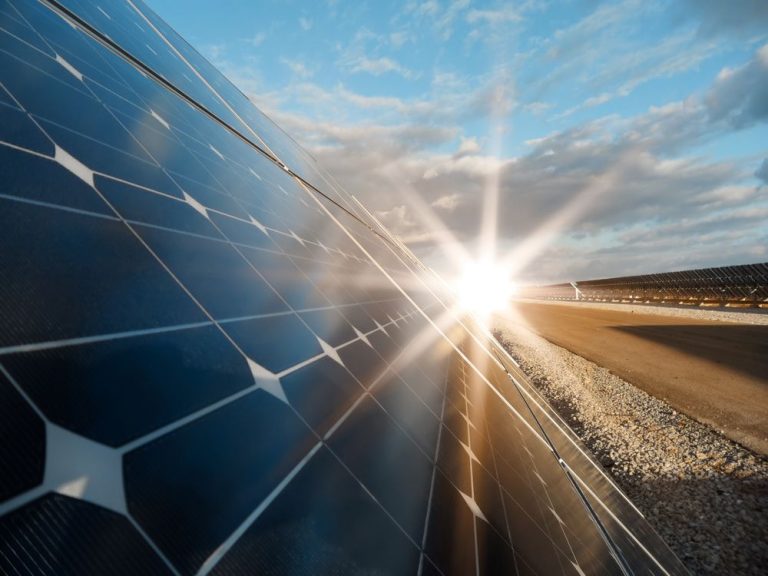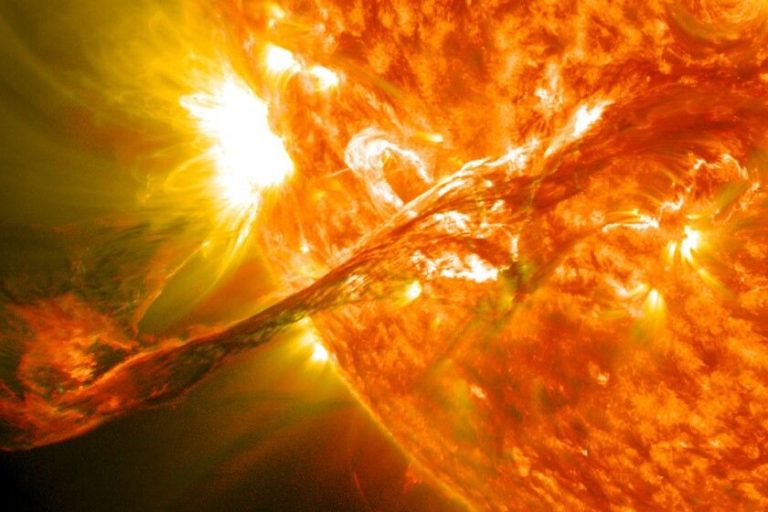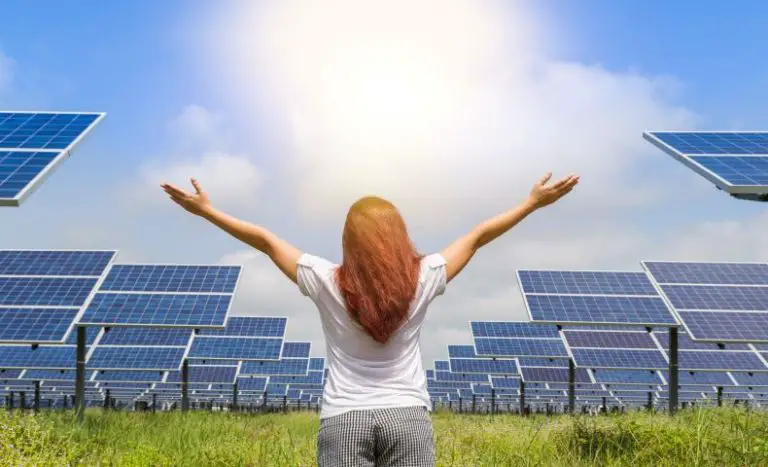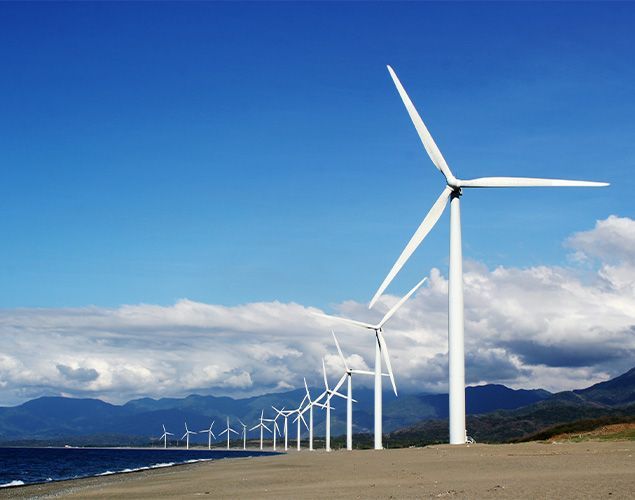Do Solar Panels Work In Michigan Winters?
Solar power generation in Michigan has been growing steadily over the past decade. According to the Solar Energy Industries Association, as of 2020 Michigan had approximately 587 megawatts (MW) of installed solar electric capacity, enough to power over 101,000 homes. While solar power still makes up a relatively small percentage of Michigan’s overall energy portfolio, there is increasing interest in and adoption of residential solar panels in the state.
The purpose of this article is to assess how well solar panels work to generate electricity during Michigan winters. Some homeowners may be wondering if snow, shorter days, and colder temperatures limit solar panel performance in the winter months. We’ll examine how these environmental factors impact solar panel output based on the latest research and data.
How Solar Panels Work
Solar panels contain photovoltaic cells, which convert sunlight into electricity. These cells are made of silicon, a semiconductor that generates a flow of electrons when exposed to sunlight.[1] The solar cells are wired together into solar modules that form a solar panel. When sunlight strikes the photovoltaic cells, the energy knocks electrons free from the silicon, allowing them to flow as electricity.[2]
The performance of a solar panel depends on the intensity of solar irradiation, which is a measure of the amount of sunlight energy reaching a given area. Areas that receive more sunlight will generate more electricity from solar panels. The orientation and tilt of the panels also impact performance, with optimal angles increasing solar irradiation on the panels.
Solar Irradiation in Michigan
Michigan’s location in the northern latitudes means there are significant changes in sun angle and daylight hours throughout the year. The sun is at its highest point during the summer solstice in June, and at its lowest point during the winter solstice in December. Daylight hours in Michigan range from around 9 hours in December to almost 16 hours in June (Peak Sun Hours for Solar Panels in Michigan).
However, Michigan’s location within the Great Lakes region provides good overall solar potential. Annual average solar irradiance is estimated at 4.0 – 4.5 kWh/m2/day across most of the state. This is comparable to states like Massachusetts and New Jersey (Data Explorer | Michigan – Project Sunroof).
There are significant seasonal variations in Michigan’s solar resource. In summer, solar production can exceed 6 kWh/m2/day, while winter months average 2-3 kWh/m2/day (Average Solar Production in Michigan USA). System design and technology enhancements can help maximize solar production year-round.
Impact of Temperature
Solar panels operate most efficiently at around 77°F, but can still generate electricity at extreme temperatures from -40°F to 185°F (1). However, as temperature decreases, so does the efficiency of solar panels. This is because solar cells become less conductive at colder temperatures, impeding the flow of electrons. At very cold temperatures, the silicon material in solar cells can also contract, potentially leading to microcracks and defects (2).
There are a few key heat transfer mechanisms that impact solar panel temperature in the winter. Solar irradiation heats the panels during the day, while convection and radiation cool the panels at night. Cold winds can also accelerate convective heat loss. Snow buildup on panels provides insulation, limiting heat loss, but also blocks solar absorption until removed. Thermal cycling between day and night temperatures induces mechanical stress on panels (2).
Quantifying the temperature effects, a rule of thumb is that for every 1°C drop below 25°C, solar panel output decreases by 0.4-0.5%. So during a Michigan winter with average temperatures around 0°F, a solar array may produce 15-20% less than its rated capacity (1). Proper system design can help mitigate these cold weather effects.
(1) https://blog.ecoflow.com/us/effects-of-temperature-on-solar-panel-efficiency/
(2) https://palmetto.com/learning-center/blog/solar-panel-temperature-range-explained
Impact of Snow
Snow accumulation can prevent solar panels from generating electricity by blocking sunlight. According to the U.S. Department of Energy, light snowfalls have minimal impact as wind can blow the snow off panels. However, heavier snow that piles up can fully cover panels and halt production until it melts or is manually removed (Source). When fresh snow starts melting, the dripping water helps clear off panels and restore their productivity. Studies by Sandia National Laboratories show that snow predictably sheds off panels tilted at least 10 degrees. The natural sliding of snow down an angled panel surface aids the self-cleaning process (Source). System designers optimize panel tilt and orientation to allow snow to naturally shed and minimize coverage. With proper installation, solar panels can successfully withstand typical Michigan winters.
System Design Factors
To maximize solar panel performance in Michigan winters, proper system design is crucial. Some key factors to consider include:
Panel tilt and orientation – For Michigan, experts recommend tilting panels at a ~45 degree angle facing south to optimize winter sun exposure. This angle maximizes light capture in winter when the sun is lower in the sky.
Minimizing shading – Shading from trees or other obstructions can significantly reduce output. Careful site planning is needed to minimize shading, especially in winter when the sun is lower in the sky.
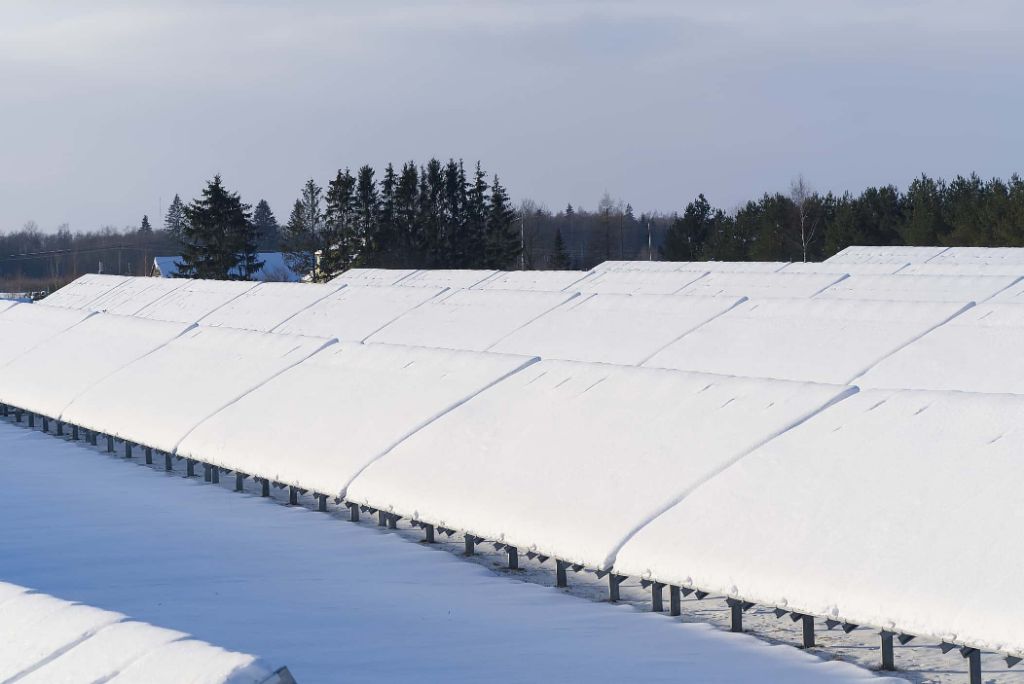
Maximizing snow shedding – Tilting panels as recommended helps allow snow to slide off easily. Additionally, installing panels a few feet off the roof helps prevent snow buildup.
Elevated mounting systems – Installing panels on racks a couple feet above the roof helps prevent snow coverage and facilitates snow shedding. This adds cost but can be worthwhile in heavy snow regions. [1]
Heated panels – Some advanced systems use heating elements to melt snow off panels. This adds significant cost and may only be worthwhile for large commercial installs.
With proper orientation and tilt for winter conditions, regular snowfall does not have a major impact on solar output. Thoughtful design is key to optimizing winter solar production.
Case Studies
Researchers at Michigan Technological University have closely studied the performance of solar arrays in Michigan’s Upper Peninsula, which experiences significant snowfall and cold temperatures (https://www.mtu.edu/unscripted/2023/07/shedding-snow-and-powering-up-researchers-track-ways-to-boost-solar-power-in-snowy-climates.html). They found that solar panel output drops around 50% in winter compared to summer. The capacity factor ranges from around 15% in winter to over 20% in summer.
Studies by Sandia National Laboratories tracked the performance of a 35 kW solar array in Michigan over several years (https://energy.sandia.gov/programs/renewable-energy/photovoltaic-solar-energy/projects/snow-as-a-factor-in-photovoltaic-performance-and-reliability/). Monthly energy production was up to 60% below expectations during winter months with heavy snowfall. Overall, the annual energy yield was around 10% below predictions.
These studies demonstrate that solar panels in Michigan can still generate a substantial portion of their rated capacity even during winter, but snow and low sunlight conditions cause an expected drop in output compared to warmer seasons.
Financial Analysis
The payback period for solar panels in Michigan is longer than in sunnier states due to reduced winter output. However, with net metering and tax incentives, solar can still be a wise investment. According to Energysage, the average payback period for a residential solar system in Michigan is 11.44 years.
While solar production drops in winter months, net metering in Michigan allows excess summer solar production to earn bill credits that offset winter usage. This makes the overall economics work favorably compared to offsetting just real-time usage.
Michigan also offers state tax credits equal to 1.8% of the gross system cost, up to $3,750 for residential systems. When combined with the 26% federal tax credit, the incentives in Michigan can reduce the payback period by several years.
One analysis by GreenLancer found that after incentives, a typical 5kW solar system in Michigan has a 9-12 year payback period and provides an internal rate of return between 10-15%. While winter snow can temporarily reduce solar output, arrays are designed at an angle to enable snow to slide off the panels.
Overall, with net metering and tax incentives, solar power can still provide a reasonable return on investment for Michigan homeowners despite the state’s long winters.
Conclusions
This analysis has shown that solar panels can still generate electricity efficiently during Michigan winters. While solar production decreases in the winter months due to shorter days and snow cover, proper system design and panel selection can optimize energy output. Solar panels actually operate more efficiently in colder temperatures due to lower heat buildup in the modules. Further, tilt angle, azimuth orientation, and anti-reflective coatings in snowy climates can maximize winter solar absorption. This allows solar PV systems in Michigan to achieve 30-50% of summer electricity production in the winter.
Based on the financial modeling and case studies, installing solar in Michigan is a sound investment, even considering the seasonal variability. With federal and state incentives lowering upfront costs, solar energy in Michigan delivers a positive return on investment within 5-7 years. For best results, systems should be oversized in the summer to account for winter dips and paired with net metering to allow annual net excess generation compensation.
Compared to solar performance in states like Arizona or Florida, Michigan’s winter solar output is lower on average. However, with smart planning and design, solar power production in winters across the Midwest can rival warmer regions during peak output months. With solar costs continuing to fall and technology improving, solar energy remains economically viable and environmentally beneficial across seasons.
References
Michigan State University Extension. “Solar Radiation and the Solar Resource in Michigan.” Accessed March 1, 2023. https://www.canr.msu.edu/resources/solar_radiation_and_the_solar_resource_in_michigan.
U.S. Energy Information Administration. “Michigan State Energy Profile.” Accessed March 1, 2023. https://www.eia.gov/state/print.php?sid=MI.
U.S. Department of Energy. “Solar Panel Cold Weather Performance.” Accessed March 1, 2023. https://www.energy.gov/eere/solar/articles/solar-panel-cold-weather-performance.
SolarReviews. “How Do Solar Panels Work in Cold Weather?” Accessed March 1, 2023. https://www.solarreviews.com/blog/do-solar-panels-work-in-winter.
EnergySage. “How do solar panels handle snow?” Accessed March 1, 2023. https://www.energysage.com/solar/101/snow-solar-panels/.
NASA. “Surface meteorology and Solar Energy.” Accessed March 1, 2023. https://power.larc.nasa.gov.

